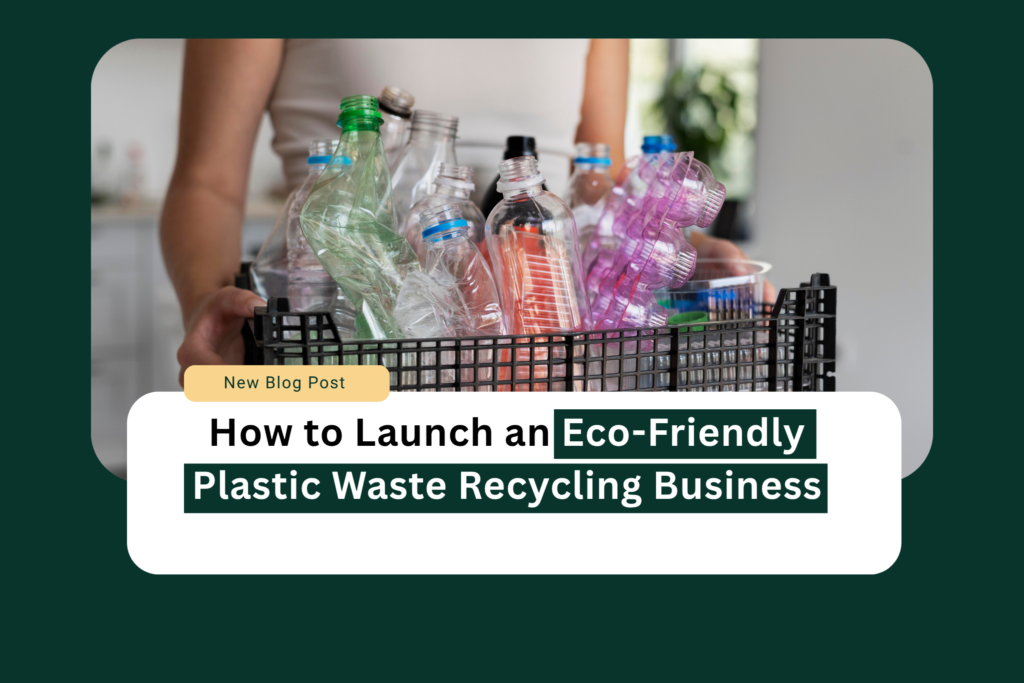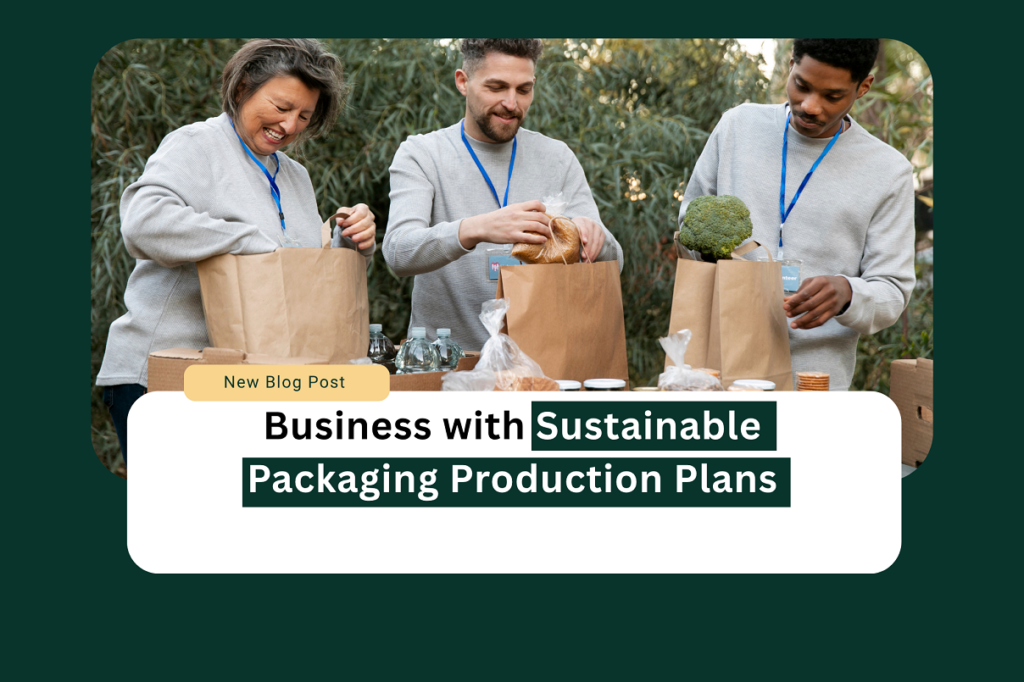Introduction: Transforming Waste into Opportunity
The sight of plastic bottles, wrappers, and containers littered on beaches creates a disturbing visual impact during every local beach walk. A sudden awareness of how this environmental disaster could be transformed into a profitable business opportunity emerged during that instant. Establishing an eco-friendly plastic waste recycling business stands as a profitable commercial venture while preserving the environment because plastic pollution has reached alarming levels at 8 million metric tons per year according to the International Union for Conservation of Nature (IUCN).
The detailed business plan establishes the complete launch sequence of this business by developing specific stages that tackle recycling industry conditions and promote sustainable practices alongside innovative solutions.
Step 1: Market Research and Business Model Development
Your business should start with extensive market research that identifies the exact plastic waste recycling requirements throughout your chosen location. The Environmental Protection Agency (EPA) reports that annual plastic waste production by Americans reaches 35 million tons, yet only 8.7% of this waste gets recycled, thus showing substantial potential for growth. Start your business by studying the waste production rates in your area and the current recycling facilities as well as the businesses that need recycled materials. Decide if your business will handle collection and processing or function as either operation separately.
Your business should explore different income streams that include waste collection fees together with sales of processed materials to industry manufacturers and production of finished recycled products. Eco-friendly plastic waste recycling businesses achieve their highest success rates when they use hybrid models that derive revenue from various sources while delivering maximum environmental advantages through their operational methods.
Step 2: Securing Funding and Creating a Financial Plan
Starting an eco-friendly plastic waste recycling business demands substantial funds for acquiring essential equipment together with facility construction and operational costs. Startup expenses for plastic waste recycling operations span between $10,000 for small collection systems to more than $1 million for full processing facilities, according to Recycling Today. Research traditional bank loans together with government green initiative grants angel investors and crowdfunding platforms that assist environmental ventures.
Develop a comprehensive financial document that shows your equipment purchase expenditures while detailing operating expenses together with your revenue projections. The startup costs of industrial plastic sorting and processing machinery form the biggest expense for recycling operations but developing a contingency fund should be your priority to handle unexpected expenses in the first operational period.
Step 3: Navigating Regulatory Requirements and Permits
Environmental regulations control the eco-friendly plastic waste recycling business area to maintain both public safety and environmental protection. Your first step should involve researching all waste management and environmental compliance regulations at the federal, state, and local levels and recycling operation guidelines. Most recycling businesses need to obtain permits from the Solid Waste Association of North America for waste handling alongside air emission and water discharge permissions and zoning acceptance documents. Make appointments with environmental regulatory agencies to learn about the exact operational requirements that will apply to your business.
Seek voluntary certifications including Leadership in Energy and Environmental Design (LEED) or B Corporation status because they will strengthen your eco-friendly image. Your business growth will benefit from building strong connections with regulatory authorities at the initial stage because it will lead to simplified permitting processes and reduced compliance complications.
Step 4: Equipment Acquisition and Facility Setup
The choice of appropriate equipment becomes essential for your eco-friendly plastic waste recycling venture to achieve both operational excellence and superior output results. Your business operation requires specific combinations of collection bins and sorting systems in addition to washing equipment, grinders, extruders, and pelletizing machines. The Plastics Industry Association studies show that new recycling equipment boosts processing efficiency by 40% higher than traditional equipment of previous generations. The facility design should prioritize workflow efficiency and contamination prevention while ensuring safe operating conditions.
You should evaluate new and refurbished equipment choices to balance cost-effectiveness with high standards of quality. Your facility should incorporate energy-efficient systems because industry analyses from Resource Recycling Systems show that energy costs comprise 15-25% of operational expenses in recycling plants.
Step 5: Developing Collection Networks and Supply Chains
The operation of your recycling facility requires dependable collection networks because they provide a continuous plastic waste supply. Initiate collaborations between your organization and local businesses as well as municipalities, schools, and community organizations. Businesses that maintain robust collection networks from their community produce 30% more plastic waste than those that depend on municipal recycling services only according to The Recycling Partnership. Your business must create optimized waste collection routes along with scheduling to cut down transportation expenses while reducing environmental impact. Quality control systems installed at collection sites decrease contamination levels that negatively affect both processing expenses and end-product quality. When your business reaches maturity you should either create new collection points across different regions or focus on processing waste plastics with high demand in recycled material markets.
Step 6: Marketing Strategy and Customer Development
Creating a complete marketing strategy plays an essential role in establishing your eco-friendly plastic waste recycling business in the market. Promote your environmental dedication together with product or service reliability and quality. Consumer research conducted by Nielsen shows that 73% of global consumers would modify their buying behaviors to decrease their environmental impact. The marketing strategy should reach waste generators for collection services and manufacturers through separate marketing approaches.
Your brand should promote transparency through the disclosure of environmental metrics including the reduction of plastic landfills and carbon footprint decreases. Create an authoritative digital profile with a well-designed website and socially-engaged pages that display your operational activities and achievements and community engagement activities as well as educational content about plastic recycling benefits.
Conclusion: Building a Sustainable Future Through Eco-Friendly Plastic Waste Recycling
The establishment of an eco-friendly plastic waste recycling business provides both environmental solutions and financial opportunities to tackle our most critical environmental concerns. Entrepreneurs who follow market research along with strategic marketing steps will establish operations that significantly reduce plastic pollution. The business launch demands proper planning together with substantial financial investment and absolute dedication to environmental principles that surpass mere financial gain.
The growing emphasis on sustainability gives businesses with pioneering recycling solutions an essential role in establishing a circular economic system. The sustainable plastic waste recycling sector develops constantly while creating new prospects for people who want to convert environmental problems into business opportunities.
What did you think about this business plan? If you found it helpful, please share it on your social media accounts and let me know your feedback about additional elements you’d like to see covered in future articles about sustainable business ventures.
FAQs
1. How much investment is needed?
Small operations start at $10,000, while full processing facilities require $500,000–$1M+.
2. Which plastics are most profitable?
HDPE and PET are in high demand and yield better market prices.
3. What regulations apply?
Permits for waste handling, air quality, wastewater, zoning, and business licenses are required.
4. How to secure plastic waste?
Partner with municipalities, businesses, and community programs for a steady supply.
5. What are the key challenges?
Material contamination, market fluctuations, regulations, supply consistency, and energy costs.
Read More : https://theacechronicle.com/diy-and-hardware-retail-store-strategy/








